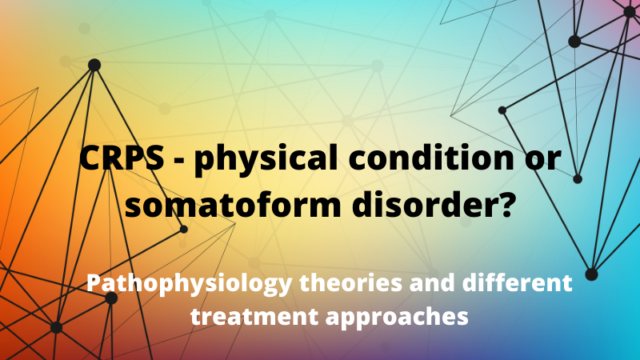Pain and malingering from a medicolegal perspective

There are several definitions of malingering, but in essence, it is the deliberate and fraudulent feigning or exaggeration of the symptoms of illness or injury for an external benefit. In this last respect, it differs from factitious disorder, where the benefit to the patient is the satisfaction of an internal psychological need. There is no psychiatric basis for malingering and it is not listed as a diagnosable mental or behavioural disorder in the current edition of the International Classification of Diseases (ICD-10). The prevalence of malingering is unclear; estimates range from 5%–75% but these figures are likely to be underestimates. By definition, convincing malingerers are never discovered. Furthermore, suspicions of malingering are likely to be higher in cases involving worker’s or personal injury compensation and disability determination. Countries where compensation rates for whiplash type injuries are generous tend to report high levels of such injuries, whereas in countries where there is no formal compensation system, the development of chronic symptoms is rare.
For many years, pain has been seen as a purely physical experience and there has been a clear distinction between real and imagined pain. Thus, conditions which caused pain without any obvious physical symptoms were often dismissed as malingering. Currently, we view pain in a more holistic way, and acknowledge that there is a psychological element to it. However, due to the subjective nature of pain, it is still often claimed that patients exaggerate or completely fabricate their symptoms to maximise the benefits realised by a successful claim, particularly in those suffering from chronic pain. This is partly due to the fact that it is difficult to determine a ‘normal’ level of pain for any specific physical injury, as everyone experiences pain differently. However, it is also true that disorders that are difficult to diagnose objectively are relatively easy to fake.
Determining whether a patient is truthful or malingering can be extremely difficult and there is no wholly accurate way of doing so. Although physical signs such as swelling, redness and bruising may indicate recent injury, they may also be factitious. In cases of chronic pain, the patient’s general appearance may offer some clues. Chronic severe pain causes changes, both from the condition itself and its continued impact on appetite and sleep. Therefore, observations made over a period of time may be necessary to determine whether the patient is malingering. Furthermore, proof of intent to deceive, which is crucial for a diagnosis of malingering, is hard to achieve, and requires substantial objective evidence of false or exaggerated symptoms that are consciously produced.
Given these difficulties, a number of methods have been developed to aid in the identification of potential malingerers. These include questionnaires, clinical examinations, facial expression, mechanical testing devices and differential spinal blocks. Studies using questionnaires have demonstrated that it is very difficult for malingerers to reproduce convincing psychological profiles typical of patients suffering from chronic pain conditions. For instance, malingerers tend to over-report symptoms that are actually very rare in genuine patients, and to describe symptoms that are easily linked to serious conditions. They often refer to a higher number of symptoms and are more likely to over-estimate the severity of pain symptoms. When questioned about the consequences of their condition, genuine patients are more likely to respond negatively and in more extreme terms than those who are malingering. Interestingly, groups of subjects involved in litigation tend to show a higher prevalence of responses indicative of fabrication than in non-litigant patients.
Biomechanical assessments depend on the evaluation of movements performed multiple times, or under different circumstances. This helps to reveal inconsistencies between repeat performances and unusual or improbable impairment patterns. Generally, malingerers are not able to accurately repeat impaired movements multiple times, nor are they aware that in some injuries, muscle groups may be affected differently, producing a distinct restriction in the patient’s capacity for movement. Malingerers also show a different pattern of body movements when recorded by posturography, where a patient’s balance is tested using a computerised platform. However, this technique cannot identify the site of balance dysfunction and is not a comprehensive assessment of symptom presentation, so should be combined with other methods.
One remaining issue is that none of these methods is completely successful at separating those who are genuinely in pain from those who are exaggerating their symptoms. Therefore, it is likely that a proportion of both motivated malingerers and genuine sufferers will be misidentified. This may lead to a genuine patient being accused of symptom fabrication. Due to the stigma associated with this label, litigation for defamation could follow. However, in order for such a case to be successful, the patient would need to prove that the term malingerer was applied due to malice or negligence. Therefore, any medical examination that results in an unbiased diagnosis of malingering, as long as it is ethically conducted, is unlikely to lead to prosecution.
Malingering has potentially significant health, legal and economic impacts. The symptoms of many pain-related conditions are variable in nature and hard to prove objectively. Therefore, fabrication is relatively easy. However, identification of malingerers is also difficult, and no single test can accurately distinguish between genuine sufferers and those who are fabricating their symptoms.
Further reading:
Mendelson, G., & Mendelson, D. (2004). Malingering pain in the medicolegal context. The Clinical Journal of Pain, 20(6), 423–432. https://doi.org/10.1097/00002508-200411000-00007
Weiss, K. J., & Van Dell, L. (2017). Liability for Diagnosing Malingering. The Journal of the American Academy of Psychiatry and the Law, 45(3), 339–347.




